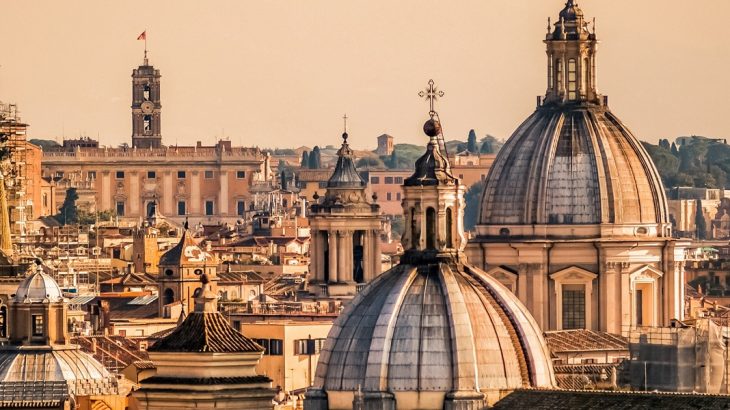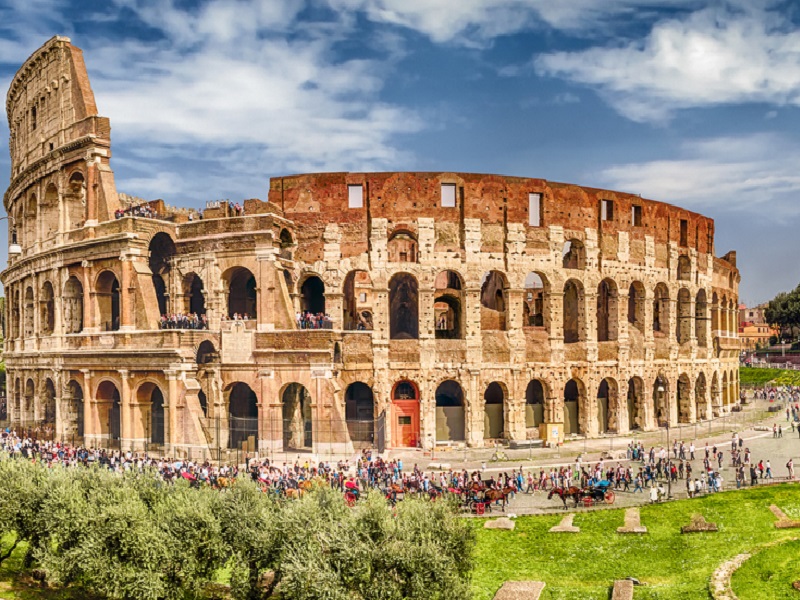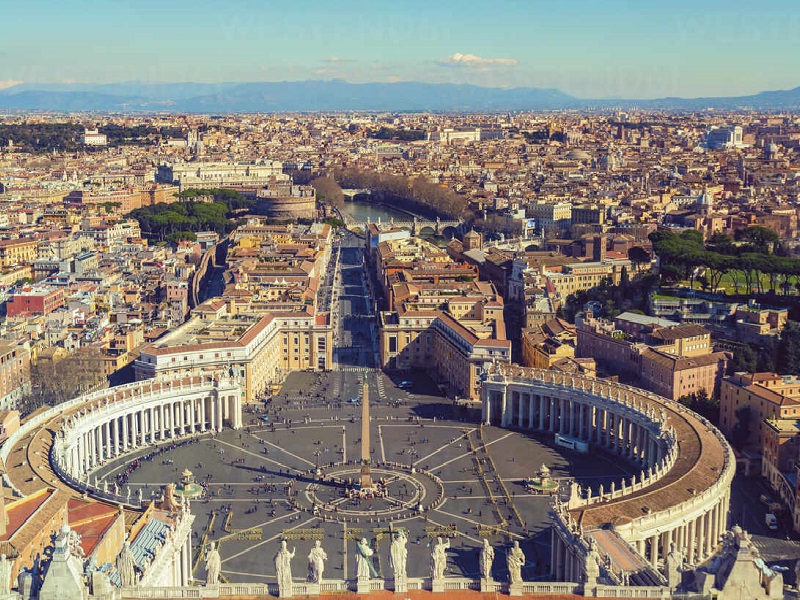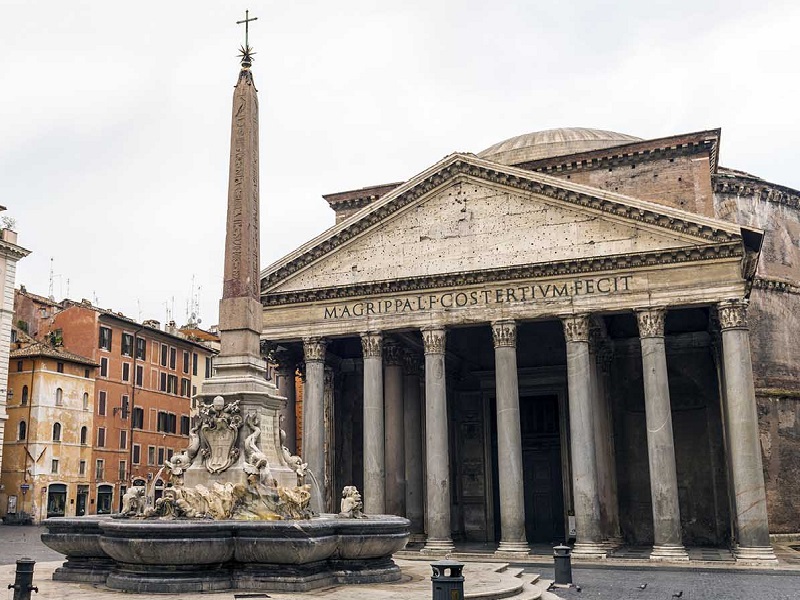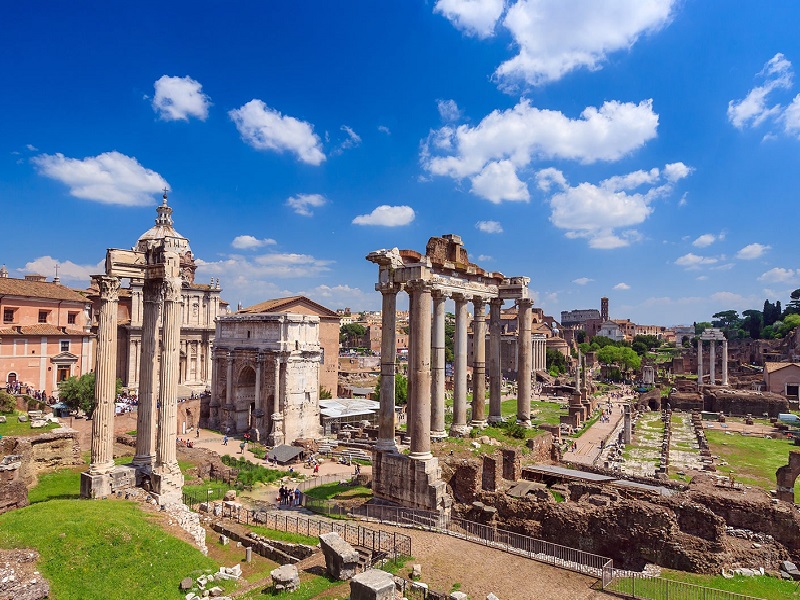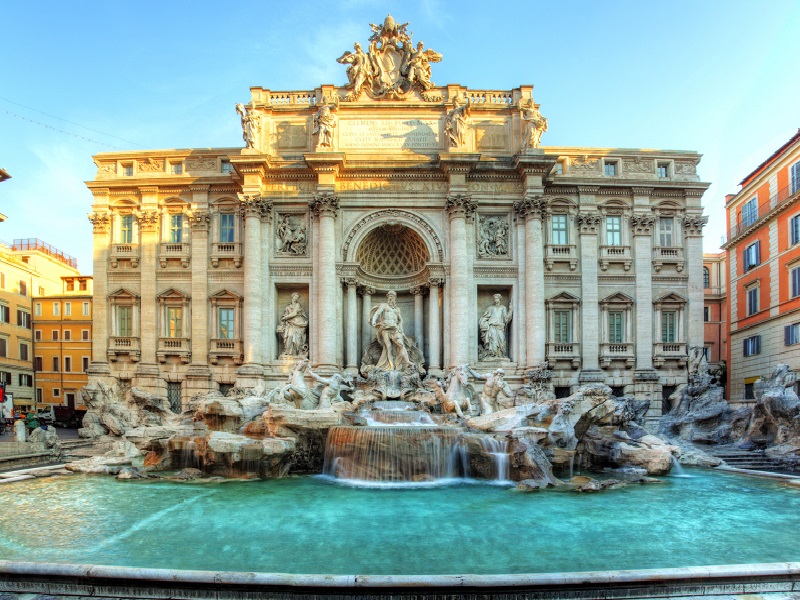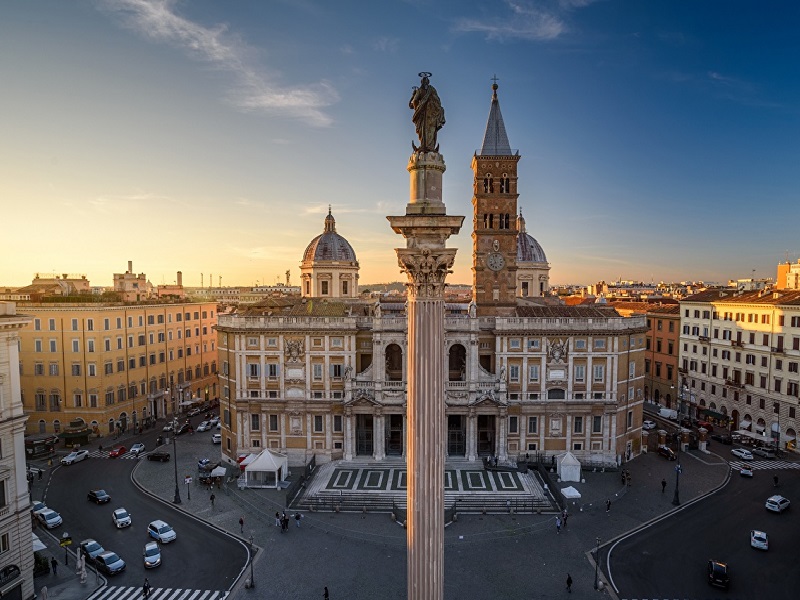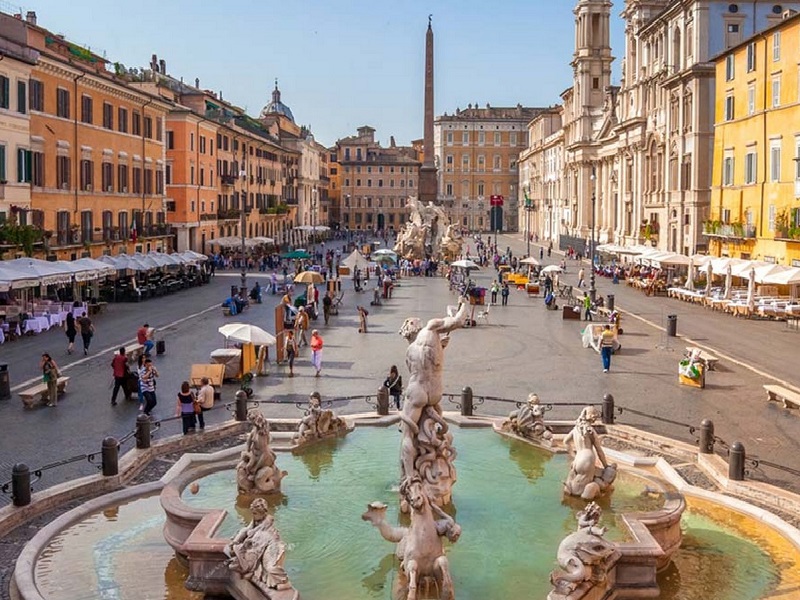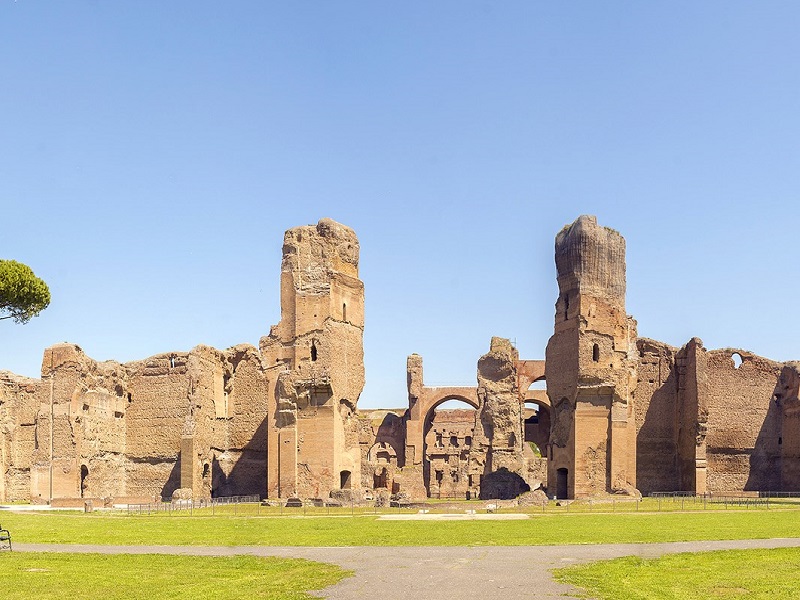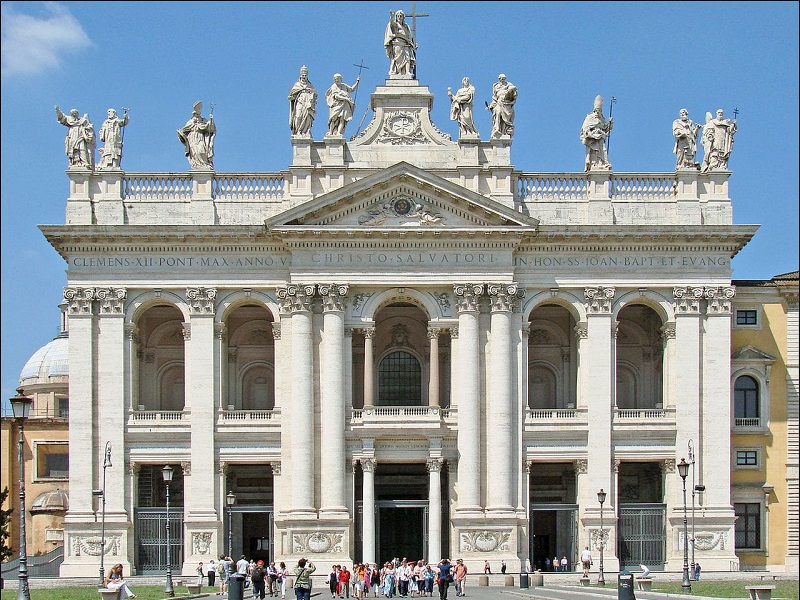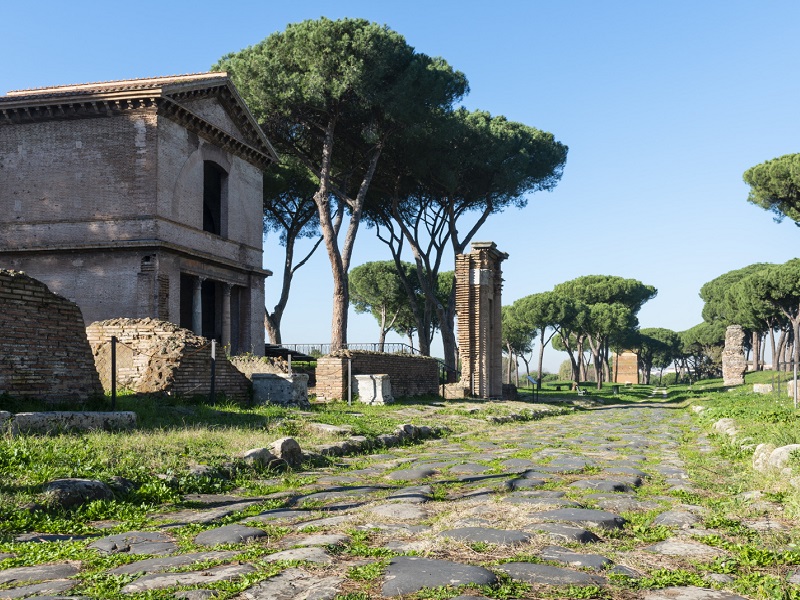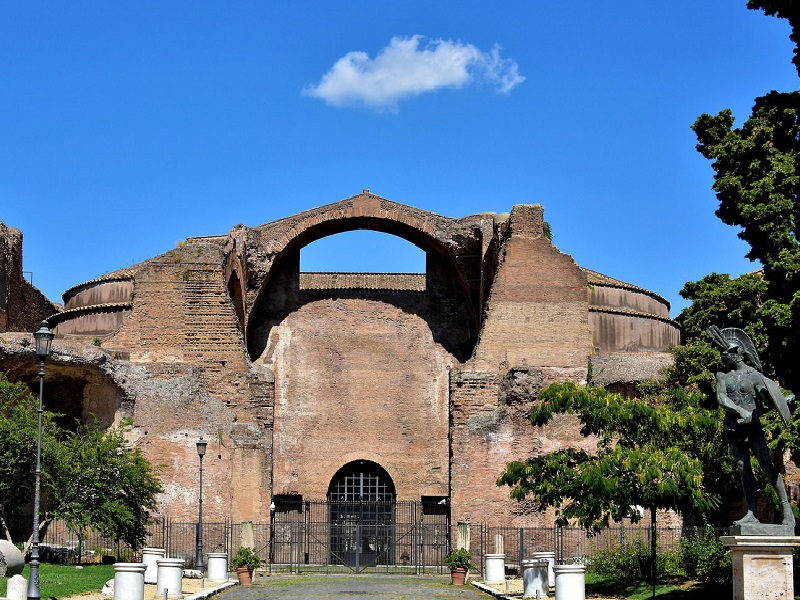Located on the central-western side of the Italian peninsula, Rome is one of the top places to visit in Italy and the 3rd most visited city in Europe after London and Paris. It was once the capital of Italy and also the seat of the Roman Catholic Church. This Italian city attracts millions of tourists from around the world every year due to its rich culture, and glorious history spiced up with vibrant nightlife. Among the top cultural destinations in Europe, this Italian city is home to several tourist places in Rome, which overwhelm visitors with their breathtaking architecture and ancient ruins. Unfortunately, it is not possible to see all the places in Rome in a few days or even a few months. To help you plan your trip, we came up with this list of the best places to visit in Rome.
Check here is the list of must-visit places in Rome.
The Colosseum & the Arch of Constantine
Known as the Flavian Amphitheatre, the Roman Colosseum is one of the remarkable monuments of Rome that is visited by over 6 million people every year. It was started by Vespasian in AD 72 and was completed by his son Titus in 80 AD. Quite often referred to as one of the Seven Wonders of the World, the Colosseum is one of the most famous landmarks in the world, which used to be the center of the Roman Empire, where gladiator games used to take place, along with theatre performances. With a circumference of 573 yards, this 2,000year-old elliptical amphitheater holds up to 50,000 spectators. Although only 3000 people can visit this place at once, it is still one of the top places to visit in Rome. Also, don’t forget to visit the Arch of Constantine that stands beside the Colosseum, a triumphal arch built by the Senate to honor the emperor as “liberator of the city and bringer of peace” after his victory in the battle of the Milvian Bridge in 312.
Vatican City
With an area of less than half a square kilometer, the Vatican is the smallest independent state in the world known to be the capital of the Roman Catholic Church. It is one of the must-visit places in Rome, and among the most popular tourist destinations in the world. Founded during 326 AD, the city is dotted with historical and religious buildings. Attracting history buffs and pilgrims, the country brims with a myriad of amazing attractions including the Vatican Museums, the Vatican Gardens, the Sistine Chapel, and the Basilica of St. Peter. One can see Pieta, the masterpiece of Michelangelo along with statuary and altars by Bernini inside St. Peter’s Basilica, among the world’s most charming basilicas.
The Pantheon
The Pantheon is another specimen of Roman architecture that has remained intact for over 2000 years and is one of the most fascinating places to visit in Rome. One of the best-preserved monuments of Roman antiquity, it was originally built in 126 AD as a temple for all Roman Gods and later it became a Roman Catholic Church in the 7th century. One of the most culturally significant and most well-preserved buildings in Rome, the Pantheon houses the remains of several illustrious figures, including the Italian Kings Vittorio Emanuele II and Umberto I, along with the latter’s wife, Margherita, the artist Raphael. Though it is 2,000 years old, the 43-meter dome of Pantheon remains the world’s largest unreinforced concrete dome.
Roman Forum
Dates back to the 7th century BCE, the Roman Forum is an impressive set of ruins of ancient monuments, temples, government buildings, and public spaces located between Piazza Venezia and the Colosseum in the archaeological city of Rome. Also known as Forum Romanum in Latin, it was once the center for all religious, political, public, and commercial activities of the Roman Empire and has now turned into one of the major places of sightseeing in Rome. After the fall of the Roman Empire, the precious monuments on the Forum were turned into ruins which narrate countless stories of valor, alliance, deceit, conspiracy, victory, and defeat of Rome, one of the top places to visit in Itay. A visit to the Roman Forum along with the Colosseum and Palatine Hill will let you understand the lives of Ancient Romans. The Temple of Antoninus Pius, the Temple of Castor and Pollux, the Temple of Saturn, the Arch of Septimus Severus, the Curia, the Temple of Vesta, and the Arch of Titus are some of the must-see places in the Roman Forum.
Trevi Fountain
Fontana di Trevi, better known as the Trevi Fountain is a world-famous Baroque fountain located at the end of ancient Aqua Virgo Aqueduct in Rome. Built-in 1762 by artist Nicola Salvi, it holds the first position in the list of the most celebrated monuments in Rome. Making for a classic symbol of this spectacular city, the Trevi Fountain features a mythological sculptural composition of the sea god Oceanus (Neptune), with horses, tritons, and shells. With 20 meters in width and 26 meters in height, the water swirls around the figures and the artificial rocks, and collects in a large basin, always filled with coins. There is also a ritual associated with the fountain, which assures luck to the people throwing coins into its water. The fountain looks its best at night when the moon reflects its light in the basin of the fountain, the cobblestone shimmers, and the pure white marble sparkles due to the streetlights, making for an ideal romantic setting.
Centro Storico
The historic center of Centro Storico is another must-visit attraction during your Rome tour. Centro Storico is the place where every tourist should spend the maximum of their time in Rome as it is the place where all the main attractions like several art-filled churches, resplendent palaces, and lively squares are located. The place is also home to some popular art galleries like Spazio Rossana Orlandi and Galleria Deodato Arte. With the classic baroque architectural buildings, well-laid pavements to walk on, and the best shopping and dining places in the city, Centro Storico will give you every piece of satisfaction.
Spanish Steps
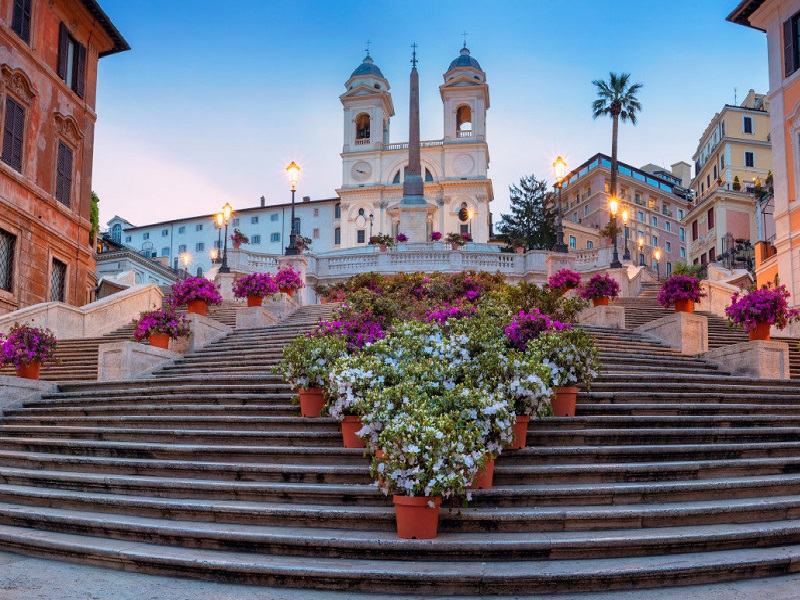
Located on the pretty Piazza di Spagna (literally ‘Spanish Square’), Spanish Steps is another popular attraction that was built in 1725 to link the Bourbon Spanish embassy to the Holy See with the French church, Trinità dei Monti. The 135-steps stairway built in an irregular butterfly-like design takes its name from Piazza di Spagna, the plaza at their base and one of Rome’s most typical squares. This is a much-loved spot in Rome for tourists, where they can sit and enjoy a gelato in the summer or warm their hands around cones of hot roasted chestnuts in the winter. If you visit this place in May, you can see the steps decorated with pink azaleas. Along, one can also visit the boat-shaped fountain at the foot of the Spanish Steps is known as the Barcaccia and was created by Pietro Bernini, father of the great Baroque architect Gian Lorenzo Bernini.
Santa Maria Maggiore
Perched on the summit of Esquiline Hill, Santa Maria Maggiore is the largest Catholic Marian church as well as one of the most celebrated churches in Rome. Also known as the Basilica of Saint Mary Major, it was founded in the 4th century, and is a part of Rome’s four most prominent basilicas of Rome, Itlay, one of the best European destinations for Indians. Known for its massive size, and marvelous interiors, the basilica represents various architectural styles ranging from early Christian to Baroque owing to its construction at different phases which makes it so unique and popular. The mosaics and the marble floors date back to the 5th century, whereas the facades and some interiors come from the restoration of the monument in the 18th century. The domes, the chapel, and the columns are in traditional Baroque style, and the inner paintings on the ceiling can be credited to the Renaissance Era. The Bell Tower is considered to be the highest in Rome with a height of 75 m.
Piazza Navona
Located in the heart of the historic center, Piazza Navona is one of the most beautiful Baroque squares of Rome. Established during the 15th century, the square is decorated with three lavish fountains, la Fontana dei Quattro Fiumi, Fontana del Moro, and Fontana di Nettuno, a baroque church in the background. It was used for festivals and horse races during the Middle Ages and was rebuilt in the Baroque style by Borromini. The square also preserves the outline of the Roman stadium built here by Emperor Domitian. Today, the Piazza Navona is bristling with life in a hundred shops, restaurants, and eateries. As you take a stroll around the fountains you would witness paintings being put on display by the local artists, the smell of fresh street food being cooked, and street performers bringing life and energy into gazing passersby.
Palatine Hill
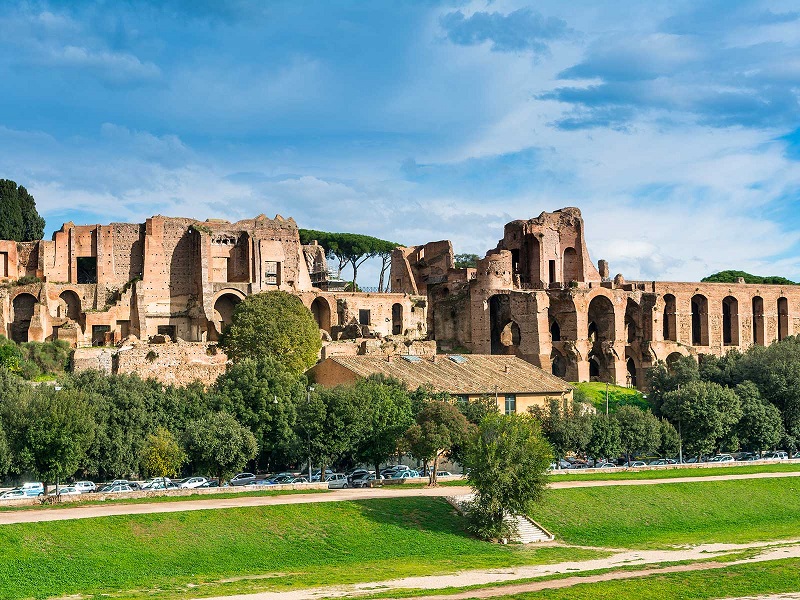
Palatine Hill is one of the Seven Hills of Rome situated next to the Roman Forum. It has links to Roman mythology, as it was here a wolf allegedly found the twin boys Romulus and Remus and cared for them until a shepherd rescued them. Even if this legend is not true, Palatine Hill is still the place where Roman civilization started and dates back to 1000 BC. Overshadowed by the fame of Colosseum, this place has been a commercial, religious and political center for many years, and is known as the “first nucleus of the Roman Empire”. Palatine Hill has hundreds of ruins and secret pathways which provide a fresh perspective of Rome and its history. The main highlights of the Palatine Hill are the House of Augustus, Palatine Museum, the Houses of Flavia, and the Baths of Septimius Severus. One can also explore the Farnese Gardens, one of the first botanical gardens ever created in Europe here as part of Rome tour packages.
Villa Borghese Gallery & Gardens
The Villa Borghese Gardens is an English-style landscape garden with walking paths and ponds. It is the must-visit place for art lovers as it is home to Borghese Galleria, one of the popular art galleries in Rome. Housed in the 17th century Villa Borghese Pinciana, the Galleria Borghese holds some of Bernini’s best masterpieces in the form of paintings, sculptures, and other antiquities, most from the 15th to the 18th century. One can see magnificent works of Caravaggio, Tiziano, Raphael, Botticelli, and Rubens. Offering a compact course of Italian aesthetics, this is the most popular and crowded museum in the whole world, and among the best places to visit in Rome. Besides, tourists can visit the Etruscan Museum, and walk in the shady alleys of the gardens and at the edge of a lake surrounded by temples, statues, and many fountains.
Castel Sant’Angelo National Museum
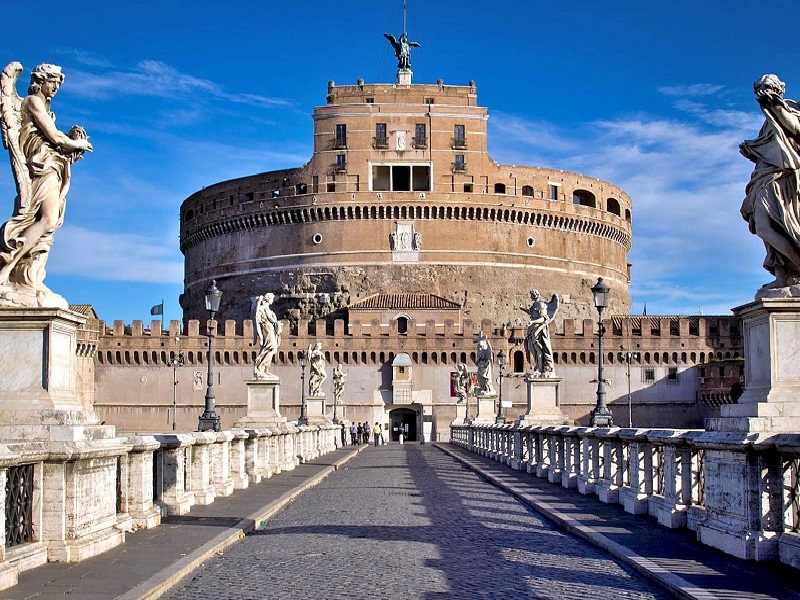
Nestled on the banks of the Tiber River, Castel Sant’Angelo, or Castle of the Holy Angel was built in 135 AD by Emperor Hadrian to serve as a mausoleum. The ashes of other emperors were buried here but scattered when the Visigoths invaded in 410. Also called the Mausoleum of Hadrian, it later was turned into a fortress and castle by the popes. Once Rome’s tallest building, this cylindrical monument was also part of Rome’s defenses and offered a place where popes could shelter, as the Vatican was connected to it by a tunnel. It also served as a prison, but today the castle is home to the National Museum of Castel Sant’Angelo. Castel Sant’Angelo is divided into multiple sections and each part of the building lures visitors with its impressive resource. The different parts of the museum include The Bastions, Passetto di Borgo, Hadrian’s Mausoleum, the Pope’s apartments, and the courtyard, Grande Loggia and Giretto. The most famous feature of this monument is a terrace that offers a stunning view of the whole city with a cute little aesthetic cafe that remains crowded at all times.
Baths of Caracalla
The Baths of Caracalla were the public baths built in 216 AD by Emperor Caracalla for political purposes. At one time, these were the second largest public baths in Rome with a capacity of 1,500 visitors. and were functional for over three hundred years. Covered an area of 300 sq. m, the Baths of Caracalla is an elaborate spa complex that hosted gymnasiums, libraries, and elaborate gardens within its premises. Unfortunately, earthquakes and plundering of building materials have turned the complex into ruins. What remains today are some of the brick walls and large vaults that have caved in, succumbing to the years. Visitors can observe the large red-bricked walls and the intricate black and white mosaic used to line the floors, providing a brief glimpse into the past glory of Rome, one of the best places to see at least once.
Basilica of St. John Lateran
Built by Constantine, the Basilica of St. John Lateran is the most ancient church in the world and the highest-ranked church among the four main basilicas in Rome. It holds the precious title of the ‘Archbasilica’ as it is the official seat of the Bishop of Rome – the Pope. Also known as the Papal Archbasilica of St John Lateran, it has served as the principal residence of Pope till the 14th century and the center of all catholic culture. Dedicated to John the Baptist and John the Evangelist, this holy place is said to be the “Mother and head of all churches on earth”. Constructed around the 4th century, the church still retains its original charm even after many fires, natural calamities, and earthquakes. Known for its beautiful architecture, the interiors of the church are beautifully decorated with wall ornaments, columns, mosaics, and paintings.
Via Appia Antica & The Catacombs
Via Appia Antica or Roman Appian Wa is a 370 KM long highway that connects Rome to Brindisi. It was originally intended for trade and moving military troops more quickly. Known as “the queen of long-distance roads”, Appian Way was Europe’s first superhighway and one of the oldest roads into Rome from Roman times. The road with its large cables and lined with many cypresses offers varied, picturesque surroundings including many parks and historical sites. On its way towards the Appian mountain, this path goes through Christian Catacombs, ruined Roman Monuments, and an ancient church. Being used by heavy vehicles and military stuff, this pathway is still intact today. The best way to visit the Via Appia and its tourist attractions is on a bicycle.
Terme di Diocleziano
Also known as the Baths of Diocletian, Terme di Diocleziano is the ancient public baths located atop the Viminal Hill in Rome. It was built by Emperor Diocletian who ruled Rome in the late-2nd century and early-3rd century. Commissioned by Maximian, the complex can accommodate around 3,000 people at a time and were considered the largest baths of ancient Rome. Back in the time, the baths occupied over 12 hectares of space on the hilltop and were visited by locals living nearby. What remains today are the ruins of Terme di Diocleziano, along with the Basilica of Santa Maria Degli Angeli e dei Martiri, Church of San Bernardo Alle Terme, and sections of the National Roman Museum.
